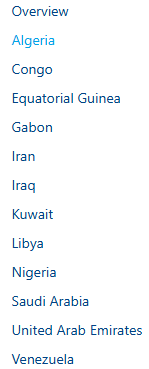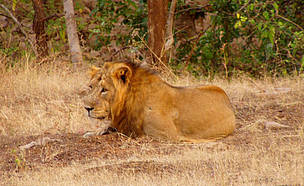Kailash Mansarovar Yatra
Syllabus: GS1/Culture/GS2/IR
Context
- The Kailash Mansarovar Yatra is set to resume after a gap of five years due to a pandemic & military standoff between China & India.
Kailash Manasarovar Yatra (KMY)
- Kailash Mansarovar Yatra holds profound spiritual significance for followers of Hinduism, Buddhism, Jainism, and Bon—the indigenous religion of Tibet.
- The Ministry of External Affairs organizes Kailash Yatra during June to September each year through two different routes – Lipulekh Pass (Uttarakhand), and Nathu La Pass (Sikkim).
- The KMY is open to eligible Indian citizens, holding valid Indian passports.
- The route involves three countries: India, Nepal, and China.
Source: IE
iGOT Karmayogi
Syllabus: GS2/ Governance
In News
- Over one crore civil servants have now registered on the iGOT Karmayogi platform.
About iGOT Karmayogi
- iGOT Karmayogi (Integrated Government Online Training) is the digital platform launched under Mission Karmayogi, India’s National Programme for Civil Services Capacity Building (NPCSCB).
- It serves as the central learning hub for government officials at every level—offering online, anytime, and modular learning.
- The platform aims to shift India’s bureaucratic training culture from one-time, classroom-based methods to continuous, role-based digital learning.
- The platform’s design is modular and scalable, functioning as a Digital Public Infrastructure (DPI). It is developed as an integral part of the Digital India stack.
Source: DD News
Asian Productivity Organization
Syllabus: GS2/Regional Grouping
Context
- India has assumed the Chairmanship of the Asian Productivity Organization (APO) for the 2025–26 term during the ongoing 67th Session of the Governing Body Meeting (GBM) of the APO.
About
- Established in 1961, the Asian Productivity Organization is a Tokyo-based intergovernmental body that promotes productivity enhancement across the Asia-Pacific region through mutual cooperation and capacity building.
- Eight founding members: Taiwan, India, Japan, Republic of Korea, Nepal, Pakistan, Philippines, and Thailand.
- The APO currently comprises 21 member economies.
- The Governing Body is the APO’s highest decision-making authority and meets annually to set the organization’s strategic direction, approve major proposals, and review Secretariat performance.
- The 67th GBM is being hosted by the Government of Indonesia.
Source: AIR
Depot Darpan, Anna Mitra, Anna Sahayata Apps
Syllabus: GS2/Governance
Context
- The Union Minister of Consumer Affairs, Food and Public Distribution launched three major digital initiatives — the Depot Darpan Portal, and digital platforms Anna Mitra, and Anna Sahayata— aimed at transforming India’s Public Distribution System (PDS).
Depot Darpan Initiative
- Depot Darpan is a digital self-assessment and monitoring platform for food grain depots.
- Aims to improve infrastructure and operations through real-time monitoring using IoT, CCTV, and analytics.
- Composite ratings are based on:
- 60% operational performance.
- 40% infrastructure standards.
- Focus on upgrading all depots to “Excellent” standards.
Anna Mitra App
- For Fair Price Shop Dealers, DFSO Officers, and Food Inspectors.
- Provides real-time data, stock management, inspections, and alerts.
- Pilot in 4 states: Assam, Uttarakhand, Tripura, Punjab.
- Available in Hindi and English.
Anna Sahayata Platform
- A grievance redressal system for PMGKAY beneficiaries.
- Uses WhatsApp, and Automatic Speech Recognition to make grievance lodging as easy as sending a message or making a call.
- Pilot in 5 states: Gujarat, Jharkhand, Telangana, Tripura, Uttar Pradesh
- Available in 5 languages Hindi, Gujarati, Telugu, Bangla and English.
- Eventually both the systems will be deployed pan India across all States/UTs as state systems will be integrated.
Source: PIB
OPEC+ Targets U.S. Shale Oil
Syllabus: GS3/Economy
In News
- OPEC+ is increasing oil output to punish overproducing members and target U.S. shale production, aiming to regain market share from the U.S. After a failed price war a decade ago.
Organization of the Petroleum Exporting Countries (OPEC)
- It is a permanent, intergovernmental Organization, created at the Baghdad Conference in 1960, by Iran, Iraq, Kuwait, Saudi Arabia and Venezuela.

- OPEC’s headquarters moved from Geneva to Vienna in 1965.
- It aims to coordinate and unify petroleum policies among member countries to ensure stable oil prices, a regular supply of oil to consumers, and fair returns for investors in the industry.
OPEC+
- OPEC formed the OPEC+ coalition with 10 of the world’s leading non-OPEC oil exporters, including Russia, at the end of 2016.
- OPEC+ crude output represents about 41% of global oil production. The group’s main objective is to regulate the supply of oil to the global market.
| About Shale Gas – Shale gas is a type of natural gas found within shale rock formations, where it is trapped in microscopic to submicroscopic pores. – It is composed of a mixture of hydrocarbon gases formed through the decomposition of ancient organic matter, such as plant and animal remains. – Shale gas contains 70 to 90% methane (CH₄), which is the primary hydrocarbon sought by exploration companies. – It is extracted by a commonly known method called Hydraulic fracturing. |
Source :TH
Transfat
Syllabus: GS2/ Health
In News
- The WHO officially recognised Austria, Norway, Oman, and Singapore for eliminating industrially produced trans fats from their national food supplies.
About Transfat
- Trans fats, also known as trans-fatty acids (TFA), are unsaturated fats present in both industrial and natural sources.
- They have sometimes been chemically altered through a process called hydrogenation. This process adds hydrogen atoms to vegetable oils, converting them into partially hydrogenated oils (PHOs)—solid at room temperature and widely used in the processed food industry.
Health Impacts of Trans Fats
- Both industrial and naturally occurring trans fats are equally detrimental to health.
- Trans fats increase levels of bad cholesterol—specifically VLDL and LDL-C—while reducing good cholesterol (HDL). The buildup of bad cholesterol in artery walls causes them to harden and narrow, significantly raising the risk of heart attacks and strokes.
India’s Response to Trans Fat Regulation
- Trans Fat Free Logo: Voluntary labelling for TFA-free products to help consumers make healthier choices.
- Heart Attack Rewind: A mass media campaign to create awareness and eliminate industrial TFA.
- Eat Right India Movement: Promotes healthy, safe, and sustainable food habits across the country.
- Regulatory Limits: In 2021, FSSAI capped TFA content in oils and fats to 3%. Reduced further to 2% by January 2022 under amended Food Safety and Standards Regulations (2011).
Global Actions
- WHO Validation Programme (2023–25): Recognises countries with successful elimination of industrial TFAs.
- WHO has called on nations accounting for 90% of the global TFA burden to adopt best-practice policies by end-2025.
Source: DTE
USA’s Golden Dome Project
Syllabus :GS 3/Science and Technology
In News
- US President Donald Trump announced a shortlisted design for the Golden Dome.
Golden Dome Project
- About: A multi-domain missile defense shield designed to operate across land, sea, air, and space.
- It is a missile defense shield which is inspired by Israel’s Iron Dome.
- Features:
- It Incorporates thousands of small satellites with interceptors capable of targeting missiles shortly after launch.
- It is designed to defend the entire U.S. against threats like intercontinental ballistic missiles (ICBMs) from rivals such as China and Russia.
- It will combine space-based interceptors with ground- and sea-based tracking and targeting systems.
Other Major Missile Defense Systems
- Iron Dome (Israel): It is a short-range missile and rocket defense.
- THAAD (Terminal High Altitude Area Defense) (USA): Intercepts short-, medium-, and intermediate-range ballistic missiles in their terminal phase.
- S-400 Triumf (Russia): Long-range air and missile defense system.
- HQ-19 (China): Mid-course ballistic missile defense (similar to THAAD).
Source: TH
India’s Lion Population Risen by 32% Since 2020
Syllabus: GS3/ Environment
Context
- As per the 16th Lion Population Estimation, India has reported a 32% increase in its lion population between 2020 and 2025.
Key Findings
- Population Increase: The total number of Asiatic lions has risen from 674 in 2020 to 891 in 2025.
- Demographic Composition: Males: 196, Females: 330 (up from 260 in 2020; 26.92% increase), Sub-adults: 140 and Cubs: 225.
- Habitat Distribution:
- 55.78% of lions are located in forested areas.
- 44.22% reside in non-forested landscapes, reflecting the growing range and adaptability of the species.
- Frequency of Census: Conducted every five years to monitor population trends and guide conservation strategies.
Asiatic Lion (Panthera leo persica)
- It is one of the five big cat species found in India.
- Physical Characteristics: Asiatic lions are slightly smaller than African lions.
- Males have less developed manes, leaving their ears visible.
- Prominent longitudinal fold of skin along the belly (a distinguishing feature from African lions).
- Distribution: In India, concentrated in the state of Gujarat in and around the Gir Forest mainly in;
- Gir National Park and Wildlife Sanctuary
- Paniya Wildlife Sanctuary
- Mityala Wildlife Sanctuary
- Barda Wildlife Sanctuary
- Conservation Status:
- IUCN Red List status: Endangered
- CITES: Appendix I
- Wildlife Protection Act, 1972: Schedule I

Source: TH
Clownfish
Syllabus :GS3/Species
In News
- A study found that adult clownfish can shrink and regrow in response to heat stress.
- Shrinking helped lower death risk by 78%, while fish that didn’t shrink had the highest mortality.
Clownfish(Amphiprion percula)
- There are at least 30 known species of clownfish, most of which live in the shallow waters of the Indian Ocean, the Red Sea, and the western Pacific.
- The clownfish can be many different colours, depending on its species, including yellow, orange, red, and black.
- The IUCN Red List of threatened species classifies them as Least Concern .
Source :TH
Previous article
Global Forest Watch
Next article
Significance of Buddhist Teachings in Modern World